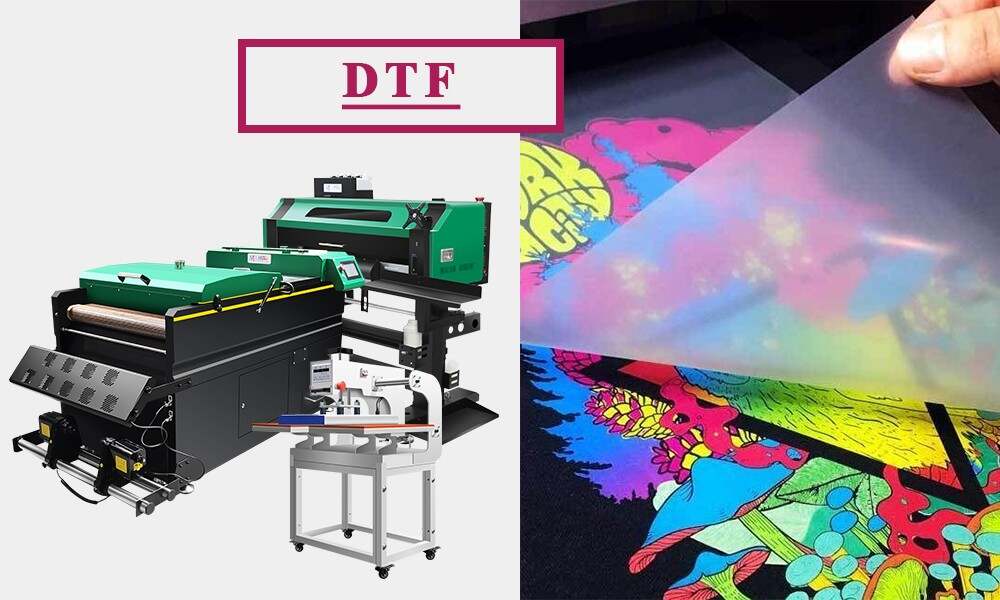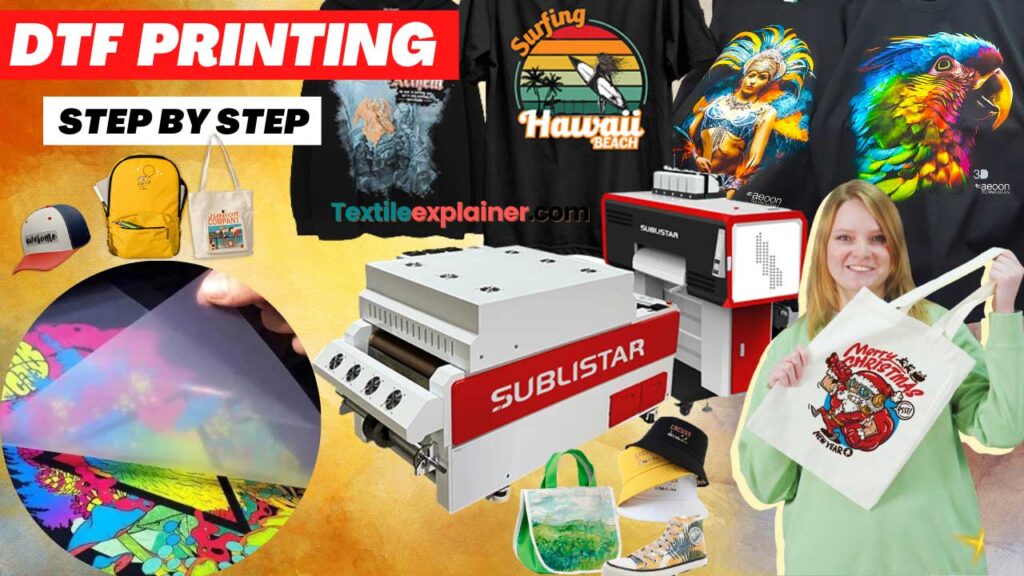DTF Printing Proficiency: Raise Your Textile Creations with Direct-to-Film Technology
DTF Printing Proficiency: Raise Your Textile Creations with Direct-to-Film Technology
Blog Article
Ultimate Overview to DTF Printing Methods for Magnificent Fabric Layouts
Getting started on the journey of understanding DTF printing strategies can open up a globe of possibilities for creating visually fascinating fabric styles. As the textile industry continues to advance, staying in advance of the contour with innovative printing methods is essential. In this guide, we will certainly discover the intricate information of DTF printing, from understanding the basic essentials to unraveling progressed color strategies that can raise your designs to brand-new heights. Stay tuned as we dive into the subtleties of choosing the ideal materials, refining the printing process, and getting over typical obstacles to achieve spectacular outcomes.
Comprehending DTF Printing Basics
DTF printing, a procedure that includes moving layouts from a special movie to textiles using warmth and pressure, creates the foundation of fabric printing strategies. This cutting-edge approach permits high-quality, lively designs to be flawlessly transferred onto numerous fabrics with accuracy and information. The primary step in DTF printing entails producing or picking a layout that will certainly be printed onto the textile. This design is then printed onto an unique movie making use of a DTF printer, which utilizes particular dyes or pigments to ensure color precision and toughness.
The final outcome is a stunning, lasting fabric layout that is cleanable, adaptable, and immune to fading. Overall, understanding the basics of DTF printing is crucial for mastering this modern fabric printing strategy.
Picking the Right Textile Materials
Having established the foundational concepts of DTF printing strategies for fabric designs, the next important consideration depends on choosing the ideal textile products to enhance this ingenious procedure properly. The success of a DTF print greatly relies on the compatibility in between the chosen material and the printing strategy. When choosing fabric products for DTF printing, it is vital to take into consideration the fabric's structure, weave, and appearance. Fabrics that work well with DTF printing include polyester blends, spandex, nylon, and other synthetic materials. These textiles usually have a smooth surface that enables for dynamic and comprehensive prints. In addition, the stretchability of these materials can accommodate the heat transfer procedure associated with DTF printing without distorting the style. It is suggested to prevent natural fibers such as cotton or silk, as they might not yield the exact same degree of print clarity and resilience. anchor By picking the best fabric products, designers can take full advantage of the potential of DTF printing to develop resilient and stunning fabric layouts.

Mastering the Printing Refine
To stand out in DTF printing techniques for fabric designs, understanding the printing procedure is crucial for achieving high-grade and consistent outcomes. The temperature, stress, and duration of warm application need to be very carefully controlled to make certain appropriate adhesion of the design to the textile. By developing each of these actions in the printing process, developers can constantly create sturdy and magnificent fabric designs with DTF printing methods.
Enhancing Designs With Color Strategies

Moreover, trying out shade slopes can bring a feeling of movement and fluidity to the style. By blending colors effortlessly, a slope result can be accomplished, adding a dynamic and modern touch to the fabric design. Additionally, utilizing color obstructing strategies can create striking and bold visuals by juxtaposing various strong shades in distinctive areas of the layout.
Moreover, including metal or neon shades can supply a special and captivating aspect to the textile layout, making it attract attention and show a feeling of vibrancy. When strategically used, these shade methods can elevate the total aesthetic allure of fabric styles, making them more exciting and unforgettable.
Troubleshooting Common DTF Printing Issues
After exploring numerous shade methods to Visit Website improve fabric layouts, it is crucial to attend to typical DTF printing problems that may emerge during the manufacturing procedure. Furthermore, problems with picture clarity and sharpness can occur due to low-resolution pictures or incorrect printing methods. By being mindful of these typical troubles and executing the necessary troubleshooting actions, you can boost the overall quality of your DTF published fabric designs.
Conclusion
To conclude, mastering DTF printing strategies is important for developing sensational fabric styles. By recognizing the essentials of DTF here printing, choosing the right materials, and boosting styles with shade methods, one can achieve impressive outcomes. It is essential to repair typical concerns that may arise throughout the printing process to make sure a successful result. With practice and interest to information, one can produce unique and attractive textile designs making use of DTF printing strategies.
DTF printing, a procedure that entails moving layouts from a special movie to textiles utilizing warmth and pressure, forms the structure of textile printing techniques.Having established the fundamental principles of DTF printing techniques for fabric layouts, the following vital consideration lies in choosing the suitable textile materials to enhance this cutting-edge procedure successfully. By choosing the appropriate textile materials, developers can make best use of the possibility of DTF printing to develop sensational and durable fabric layouts.
To succeed in DTF printing techniques for fabric layouts, understanding the printing process is important for accomplishing regular and top quality outcomes. DTF Printing. By honing each of these steps in the printing procedure, designers can continually create stunning and sturdy textile styles with DTF printing techniques
Report this page